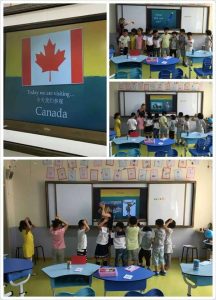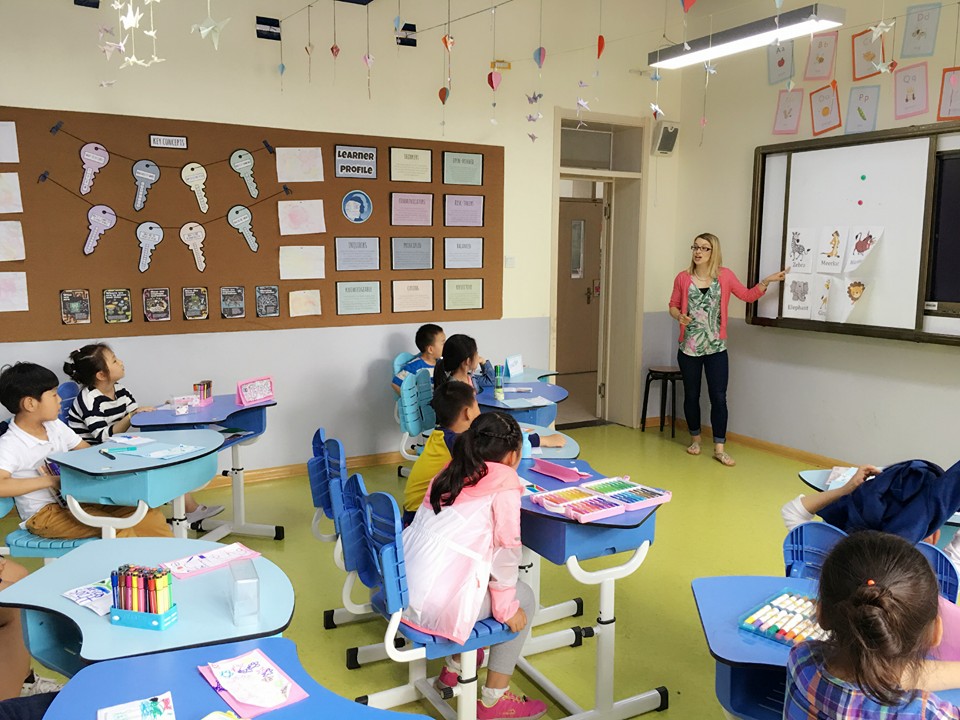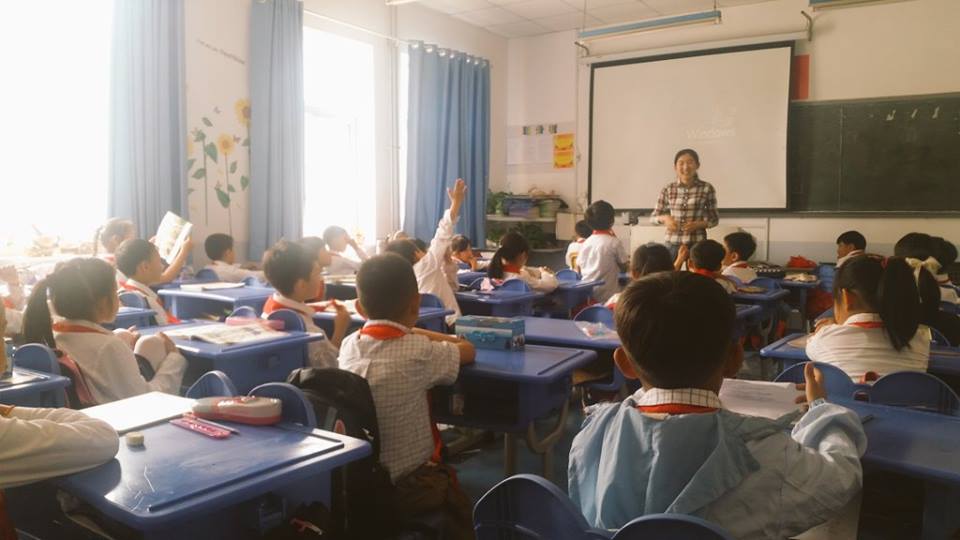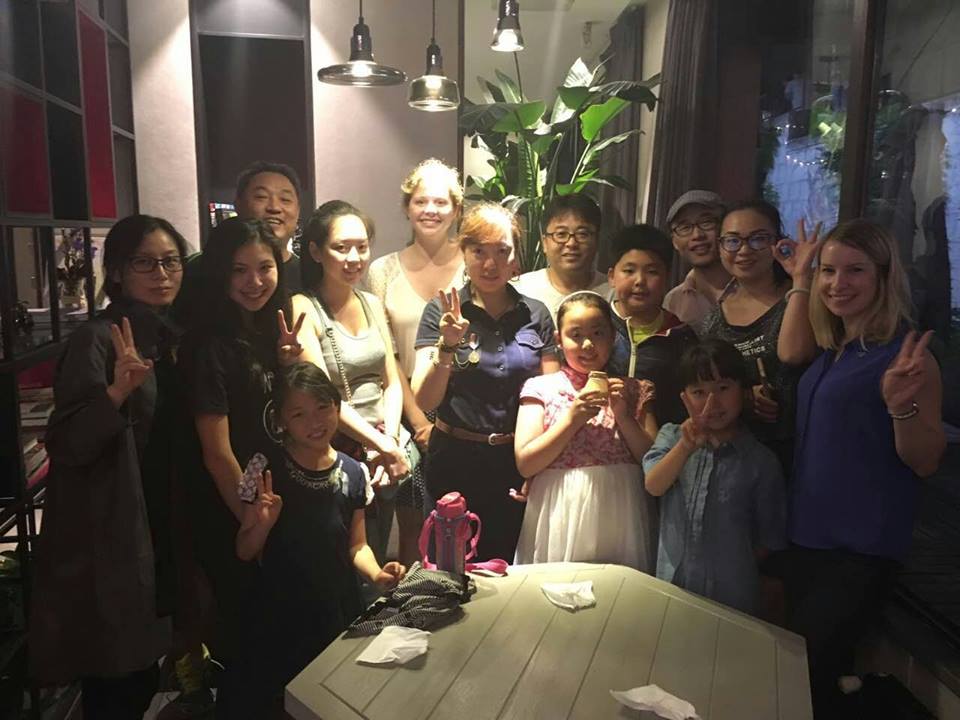Nǐ hǎo 你好! We have just finished week two of three in Qingdao, China, having spent the week teaching “Bridging” classes at the school. “Bridging” classes comprise of children from several Kindergarten’s around the city, who come to visit the school for a week as a way to help the children and parents decide if they want to attend the school. Going in ‘blind’, having never taught a Kindergarten class before, and not knowing the children or their level of English, I decided to do a mini-unit on a “Trip Around the World”. Here are my reflections following my observations and lessons during week 2.
Resources (or lack of!)
 I found that access to resources is very different when compared to schools in Canada. When planning our lessons, this was always a massive consideration as we only had access to 4 different colours of paper, and tracking down scissors, tape and paint was quite the challenge. There was a colour printer in the “International Office”, but it was extremely slow, so any more than 20 pages (i.e. a class set) was a big ask. If you wanted photocopies you had to put an order into the office with a few days notice. This was quite surprising for what is considered a private school, with fees equal to that of the top schools in B.C. I found this to be quite a barrier to what we could do in our lessons, but it also forced me to be more flexible and open-minded. While in the majority of cases, access to resources back home could be improved, it makes me feel grateful for the opportunities that we do have.
I found that access to resources is very different when compared to schools in Canada. When planning our lessons, this was always a massive consideration as we only had access to 4 different colours of paper, and tracking down scissors, tape and paint was quite the challenge. There was a colour printer in the “International Office”, but it was extremely slow, so any more than 20 pages (i.e. a class set) was a big ask. If you wanted photocopies you had to put an order into the office with a few days notice. This was quite surprising for what is considered a private school, with fees equal to that of the top schools in B.C. I found this to be quite a barrier to what we could do in our lessons, but it also forced me to be more flexible and open-minded. While in the majority of cases, access to resources back home could be improved, it makes me feel grateful for the opportunities that we do have.
Classroom Management
During our first few observations, one thing I noticed was that classroom management was virtually non-existent. We observed a very sweet teacher, and while some attempts were made, there was also a lot that was ‘let go’. This was surprising to me, as in the hallways and during ceremonies/DPA, the students are very respectful, quiet and ordered. In the classroom however, things were much different. Half the class were talking over the teacher, and one student was throwing paper aeroplanes around the class, before hanging by the teacher’s waist and refusing to let go. I was wondering how much of this was due to the environment, with 35 kids packed into a very warm, small classroom for a 50 minute lesson. I consider myself to be an easygoing teacher, but this experience made me re-think this, as I knew that my expectations as a teacher would be very different. For me, classroom management is half prevention, and considering the environment, as well as identifying and communicating my expectations, is something that I will continue to be mindful of in the future.
Student/Teacher Relationship
For me, this is the most rewarding thing about teaching. I was fully aware of this when I finished my practicum, following the tears that were shed by both myself and my Grade 6/7 students. However this experience has solidified the importance of this for me. When you are teaching in a foreign language, with your content being translated, there is a very large disconnect between you and the student. You have very little control over the way that the information and instruction is conveyed to the student. And because of the language barrier, there is also a disconnect over how much and what the student is communicating to you. Of course, a lot can be achieved through body language, but I did find this impacted how rewarding and meaningful I found the lesson, from my perspective. Moving forward, I know that having open lines of communication and promoting the student/teacher relationship will be at the forefront of my teaching.



